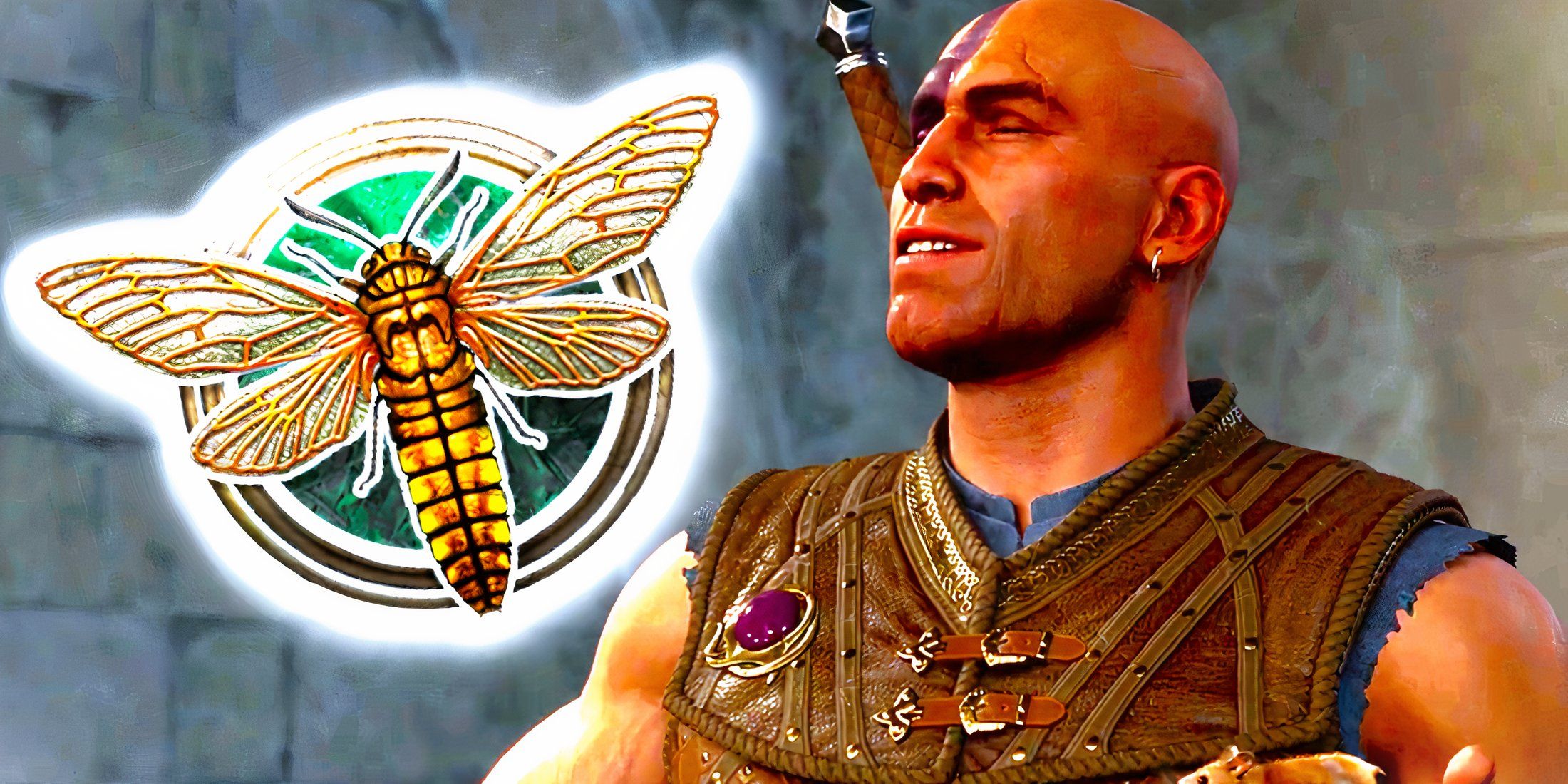
Rangers gain their subclass at level three, so you’ll have to progress a little bit before you can access any of the new spells. For anyone wanting to test out the Swarmkeeper in its full glory immediately, you can load up an old level twelve save file and reclass, since the new update is fully compatible with older campaigns. If you want to take on the Absolute with a flock of bees, moths, or jellyfish, here are some things you should keep in mind when building your character.
Swarmkeeper Ranger Subclass In BG3 Explained
Rangers Can Use One Type Of Swarm To Add Extra Damage & Debuffs To Attacks
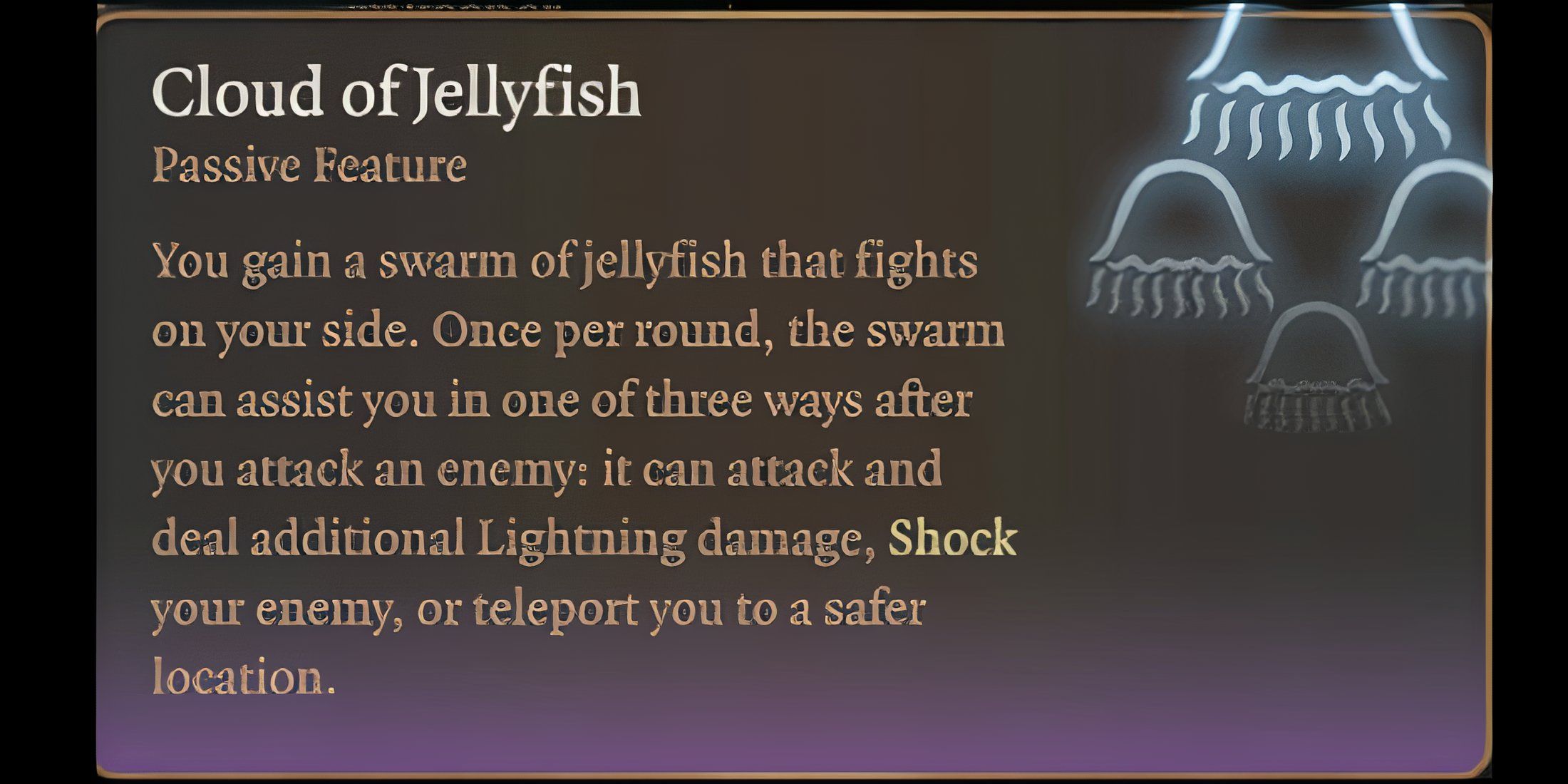
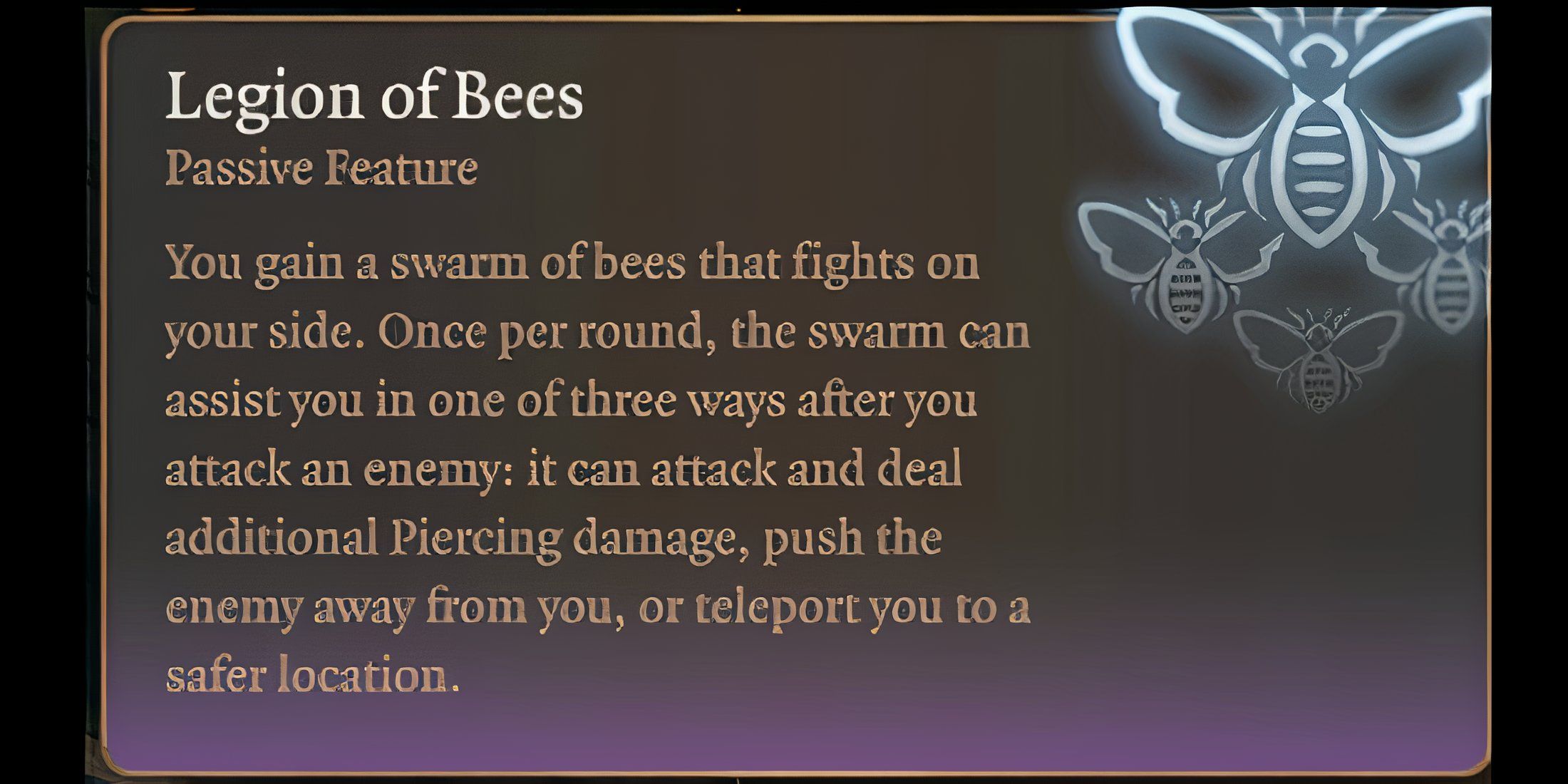
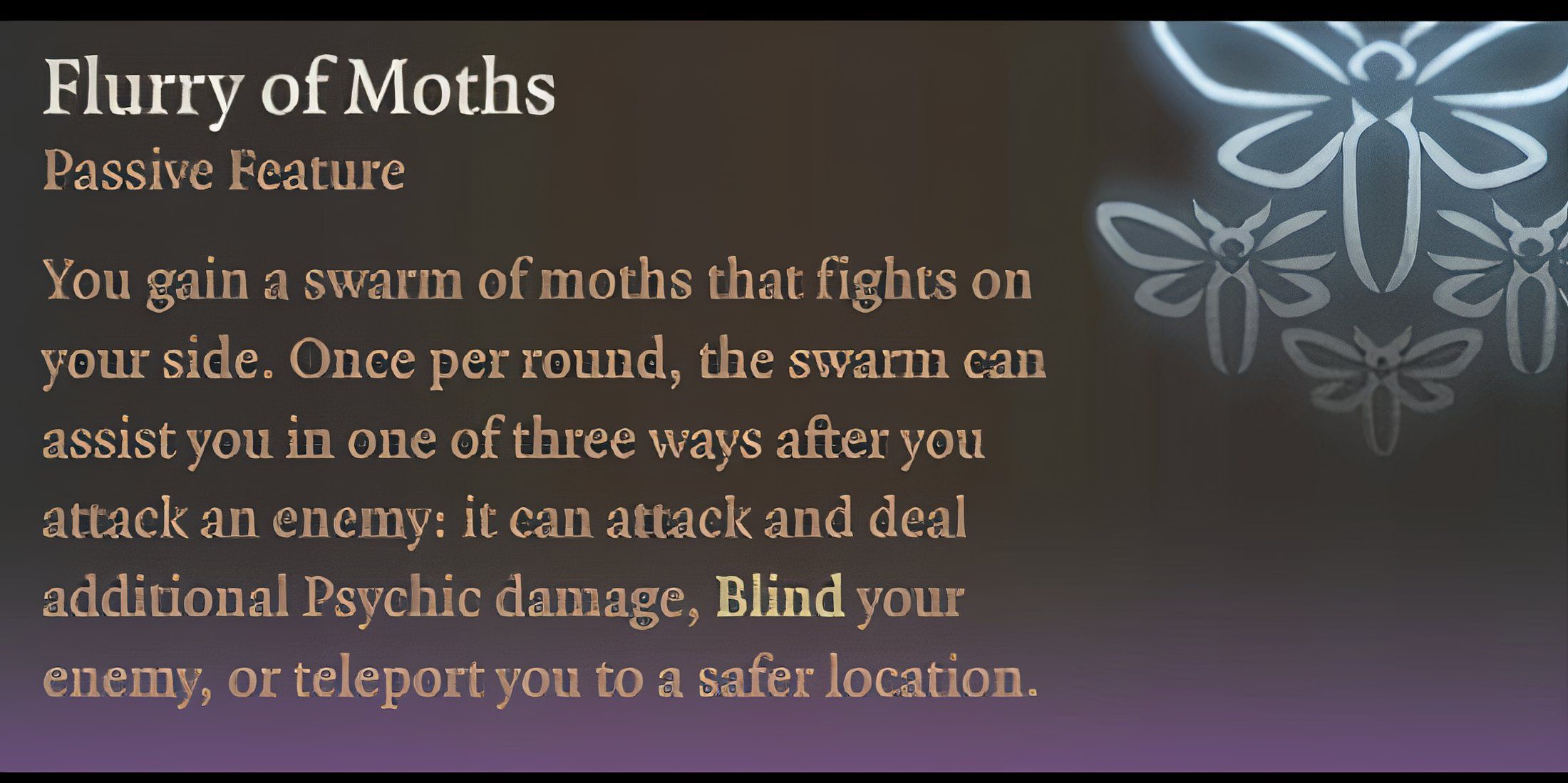



The Swarmkeeper Ranger’s defining ability is its ability to summon swarms of creatures. In Baldur’s Gate 3, there are three different swarms rangers can call upon — the Legion of Bees, Cloud of Jellyfish, and Flurry of Moths. Each of these swarms has different abilities, though they all come with the universal ability to teleport you up to 17 feet away. You can only summon one type of swarm, but you can change your chosen type every time you level up. At Level 11, swarm attacks use a d8 instead of a d6, and teleporting increases your AC by 2.
Swarm
Attack Option
Support Option
Level 11 Support Option Bonus
Cloud of Jellyfish
1d6 Extra Lightning Damage
Shock target on a failed constitution saving throw
Disarms Target
Legion of Bees
1d6 Extra Piercing Damage
Push target back 17ft on a failed strength saving throw
Knocks Target Prone
Flurry of Moths
1d6 Extra Psychic Damage
Blind target on a failed constitution saving throw
Slows Target
When you attack with your swarm, you can choose one of three options — you can use them to deal damage, teleport you, or use one of their unique supporting abilities. Each swarm deals the same amount of damage, but has different utility options. At Level 7, you gain three “Writhing Currents” per long rest, which can be used to cast “Writhing Tide.” This will cause your swarm to lift you into the air, allowing you to fly for ten turns and become immune to surface effects. You gain an extra Writhing Current at Level 9.
Swarmkeepers gain the “Prey’s Scent” passive, which causes your swarm to deal an additional d6 damage to any target afflicted with Hunter’s Mark.This stays as a d6 even after reaching level 11. The subclass also gains constant access to ![]() Mage Hand and
Mage Hand and ![]() Faerie Fire . At level 5, they gain the Web spell, which can be used to slow down or immobilize enemies, but will also negate fall damage if jumped onto from a high ledge.
Faerie Fire . At level 5, they gain the Web spell, which can be used to slow down or immobilize enemies, but will also negate fall damage if jumped onto from a high ledge. ![]() Gaseous Form is gained at level 9, which allows the caster to avoid attacks and fit into tiny spaces.
Gaseous Form is gained at level 9, which allows the caster to avoid attacks and fit into tiny spaces.
Best Build For Swarmkeeper Ranger In Baldur’s Gate 3
Max Out Dexterity And Improve Wisdom
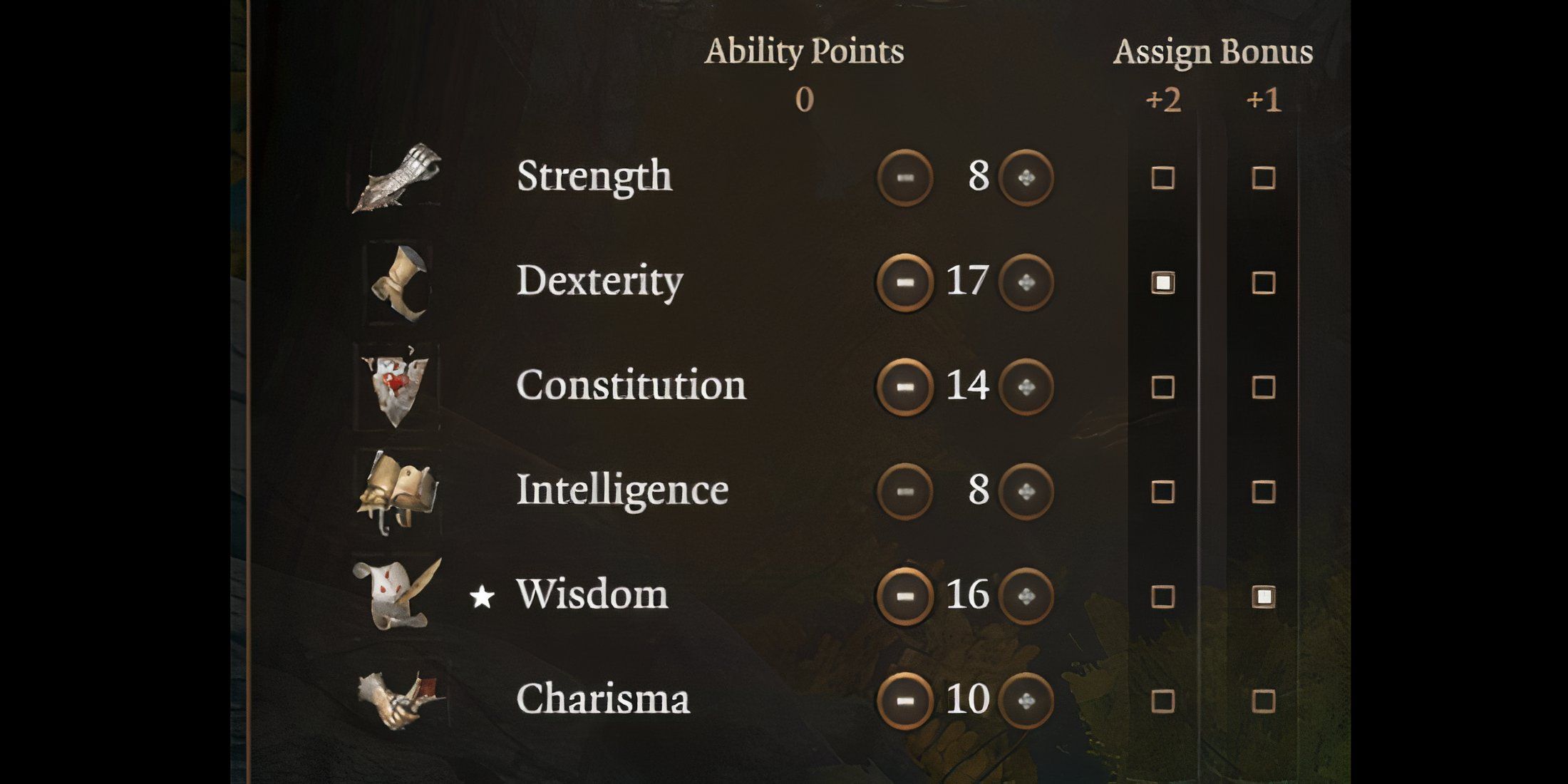
Favored Enemy
Bonus
Bounter Hunter
Creatures Hit With ensnaring strike have disadvantage on their saving throw
Investigation Proficiency
Keeper of the Veil
Protection from Evil and Good
Arcana Proficiency
Ranger Knight
Heavy Armor Proficiency
History Proficiency
Although there isn’t a huge difference between the swarms, I’ve found that the most useful one, particularly in the early game, is usually the Flurry of Moths. Psychic resistance is less common compared to lightning and piercing resistance, and the blinding effect is great for hindering enemy attacks and gaining the upper hand against other ranged casters. The githyanki race has lots of unique equipment that improves psychic damage, as well as plenty of opportunities for flexible movement, making it a solid choice for an optimized Swarmkeeper build.
Feats
Equipment
Permanent Bonuses
Athlete (+1)
Lightly Armored (+1)
Moderately Armored (+1)
Resilient: Dexterity (+1)
Weapon Master (+1)
Ability Improvement (+1-2)
Nimblefinger Gloves (+2 for Gnomes, +1 To Dwarves and Halflings)
The Graceful Cloth (+2)
Auntie Ethel’s Hair (+1)
Mirror of Loss (+2)
Some more feats that will benefit the Swarmkeeper but won’t increase dexterity are Alert, Sharpshooter, and Crossbow Expert. As noted above, a gnome with the Nimblefinger Gloves, appropriate starting stats, and added bonuses will have the most powerful dexterity-based attacks. Although it’s their spellcasting stat, rangers don’t get wisdom saving throw proficiency, but they do have proficiency with dexterity and strength. I would highly recommend picking up the ![]() Helmet Of Autonomy found on a skeleton at the entrance to the festering cove, the home of the Kuo-Toa in BG3, as it’s the only item that grants the wearer wisdom proficiency.
Helmet Of Autonomy found on a skeleton at the entrance to the festering cove, the home of the Kuo-Toa in BG3, as it’s the only item that grants the wearer wisdom proficiency.
Recommended Starting Stats
Strength – 8
Dexterity – 17
Constitution – 14
Wisdom – 16
Intelligence – 8
Charisma – 10
The druid class in BG3 is a convenient option for multi-classing since both classes use wisdom as their spell modifier, and they also work very well thematically together. The other class that uses wisdom is the cleric, and the Tempest Domain works very well with the Cloud of Jellyfish, since it grants bonuses such as Destructive Wrath and Thunderbolt Strike in response to dealing lightning or thunder damage. Though it may not necessarily be the most powerful, the Swarmkeeper has quickly become one of my favorite subclasses in Baldur’s Gate 3, as it is very fun to play around with.





